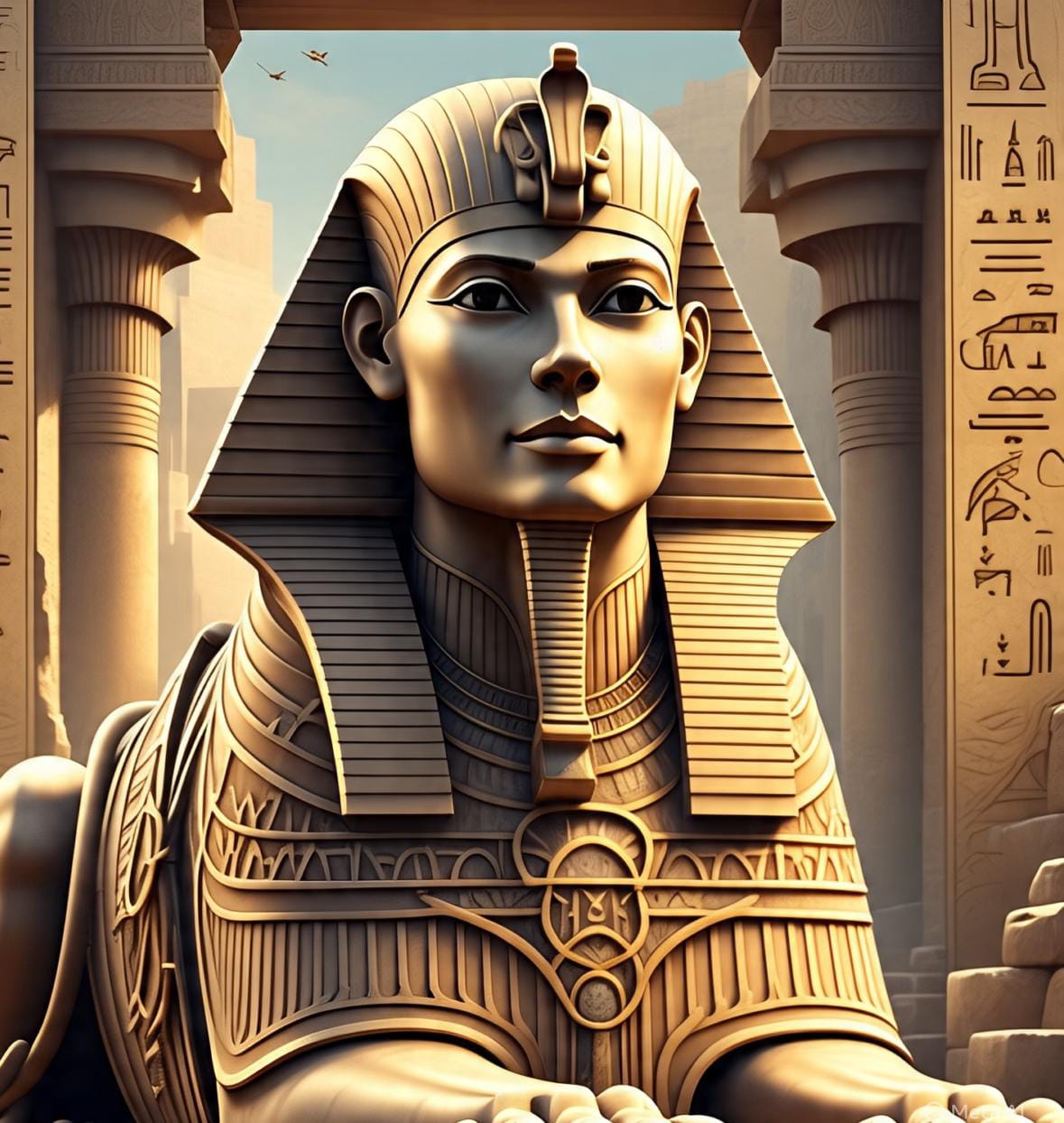Egyption Tale: The Secret Name of the Sphinx

A sandstorm was blowing across the Egyptian desert. As the dust settled, a giant figure slowly appeared—its face calm, its body like a lion. This wasn't just any statue. This was the Great Sphinx, ancient, silent, and full of secrets.
But there’s something very few people know: this mighty statue once had a secret name. A name so special that even the wind seemed to whisper it only at night. Let’s uncover this forgotten piece of history!
The Guardian of Giza
The Sphinx is one of the most famous monuments in the world. It lies beside the Great Pyramids in Giza, Egypt. With a lion’s body and a human face, the Sphinx was carved from a single block of limestone over 4,000 years ago!
Most people think it’s just a statue. But the ancient Egyptians believed it was a guardian, watching over the sacred tombs and protecting the secrets of the pharaohs.
A Dream That Revealed a Message
Centuries after it was built, the Sphinx became covered in sand. Only its head peeked above the surface. Many forgot its importance—until a young Egyptian prince, Thutmose, came along.
Tired from a long hunt, Thutmose fell asleep near the statue. In his dream, the Sphinx spoke to him! It said, "If you clear the sand from my body, you shall be king."
When Thutmose woke up, he did just that. He cleared the sand, restored the statue, and later became Pharaoh Thutmose IV. To honor the moment, he placed a stone tablet, called the Dream Stele, between the statue’s paws. But even on that tablet... the Sphinx’s real name was not written.
The Mysterious Name: Hor-em-akhet
So what was the secret name?
Ancient Egyptian priests called the Sphinx Hor-em-akhet, which means “Horus in the Horizon.” Horus was the falcon god of the sky, and this name showed that the Sphinx was more than just stone—it was a symbol of the rising sun and protection.
To the people, the Sphinx remained a silent mystery. But to the priests and kings, it had a name full of magic and meaning.
Why Was the Name Hidden?
In Egyptian belief, a name had power. Knowing a god’s or spirit’s real name meant you could call upon their strength—or even control them. That’s why many powerful beings kept their names secret.
The Sphinx’s name was treated the same way. It was sacred, used only during special temple rituals. Saying it out loud during the wrong time was thought to bring bad luck or awaken ancient forces.
Some legends say the Sphinx would rise and walk if someone ever shouted its name with an unworthy heart!
Could There Be More Secrets?
Many explorers believe there’s even more hidden under the Sphinx—like secret chambers or ancient scrolls. These are often called the Hall of Records, and some say it may hold the full truth about the Sphinx’s origin and its true purpose.
Even with today’s technology, we still haven’t uncovered all its mysteries.
A Lesson Written in Stone
What can we learn from the Sphinx and its secret name?
- Sometimes silence holds more power than noise.
- Protecting sacred things—even names—can keep their magic alive.
- Ancient wisdom is often hidden in plain sight.
- Curiosity leads to great discoveries, just like it did for Prince Thutmose.
The Mystery Continues
Thousands of years have passed, and the Sphinx still sits silently under the Egyptian sun. People from all over the world visit, stare into its stone eyes, and wonder about its past.
Maybe the name Hor-em-akhet is still alive in the wind, waiting to be heard by someone ready to understand its true meaning.
So next time you see a picture of the Sphinx, don’t just look at its shape—listen. You never know what secrets it might share when the world is quiet.